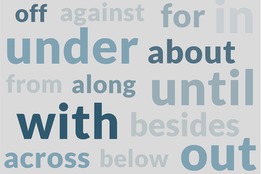Sorting Out Essential and Nonessential Clauses
What to KnowEssential clauses modify key words and are important to the main point of a sentence. Nonessential clauses provide superfluous information that, while interesting, does not change the main point of a sentence. Nonessential clauses are offset by punctuation such as commas or parentheses to indicate the clause as an aside.
In English grammar, a clause is a part of a sentence that has its own subject and verb and that provides either essential or nonessential information. Thus, we have what are called "essential" and "nonessential" clauses. Each is used differently, so knowing which is which is important in writing. For readers who are unfamiliar with the grammatical terms essential and nonessential or unaware of which type of clause requires punctuation, this is an essential article to peruse.

Essential or Nonessential?
As their descriptors suggest, essential and nonessential clauses are opposite. Essential is used to describe a clause that is an important part of a sentence because it modifies a key word. For example, in "Bonuses are given to employees who meet their sales quotas," the who clause limits which employees receive bonuses, making it essential to the sentence's statement.
A nonessential clause is essentially an aside or provider of superfluous information about a preceding word that might be interesting but is insignificant to the sentence's main point. For example, in "Fall, which is my favorite season, begins next week," "which is my favorite season" is a nonessential clause that does not affect the statement "Fall begins next week." Because it does not restrict or modify the word Fall, the clause can also be described as nonrestrictive; in contrast, since an essential clause restricts or modifies a word, it may be referred to as restrictive.
Punctuation Identifies Nonessential Clauses
Punctuation, or lack thereof, can help identify an essential or nonessential clause. An essential clause is not set off by commas or other internal punctuation marks, such as dashes or parentheses, with the understanding that it is a necessary part of the sentence. Conversely, a nonessential clause is set off by punctuation that visually marks it as separate from the main part of the sentence. To test if a clause is indeed nonessential, leave it out and reread the sentence. If the main point of the sentence is not lost or distorted, then, yes, it is nonessential and needs punctuation. Otherwise, it is essential and no punctuation is required.
Here are some example sentences showing how essential and nonessential clauses function.
Tea that is caffeinated keeps me up at night. [That clauses are usually essential, like this one.]
My refrigerator, which is only about 5 years old, started leaking. [Which clauses are often nonessential, like this one.]
Emily Dickinson—who was born in Amherst, Massachusetts—was an American poet. [The who clause is nonessential.]
The astronaut who first walked on the Moon was Neil Armstrong. [The who clause is essential.]
Those people whose names are on the list won a prize. [The whose clause is essential.]
The student was introduced to the well-known artist, whom she was excited to meet. [The whom clause is nonessential.]
As these examples demonstrate, the relative pronouns that, which, who, whose, and whom are used to introduce both essential and nonessential clauses that modify or describe a noun. The following are examples of essential and nonessential clauses in which the relative pronouns are implied but not expressed.
The person seated next to me wouldn't stop talking during the show. [The clause "(who was) seated next to me" is essential.]
Students trying out for the team must sign up by Friday. [The clause "(who are) trying out for the team" is essential.]
The house we wanted to look at has been sold. [The clause "(that) we wanted to look at" is essential.]
The company, located in Boston, is changing its name. [The clause "(which is) located in Boston" is nonessential.]
The band, playing the latest hits, entertained the crowd. [The phrase "(which was) playing the latest hits" is nonessential.]
The physics teacher I had in 11th grade inspired me. [The phrase "(whom) I had in 11th grade" is essential.]
A writer's awareness of essential and nonessential clauses, and when to correctly include or exclude a comma or other punctuation pause when using them, might go unnoticed by readers (as proper use of punctuation and grammar often does). However, having that writerly awareness can make a reader's experience that much more pleasant (or that much less painful). It is an essential quality for a good writer to have.












